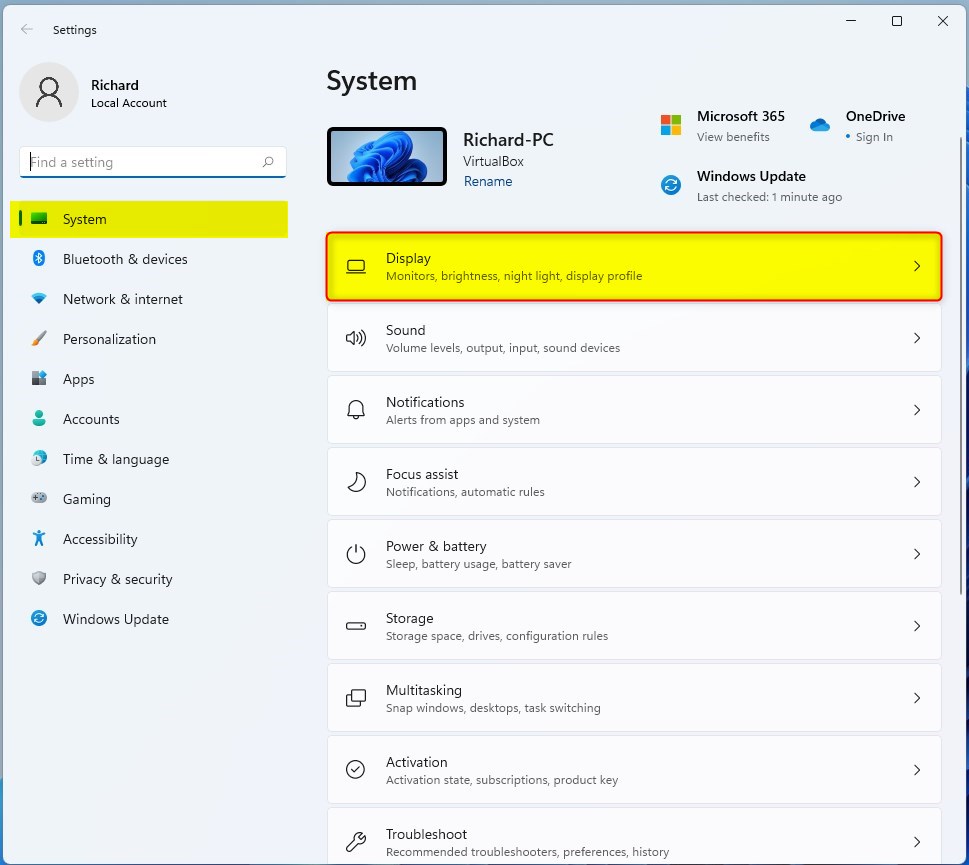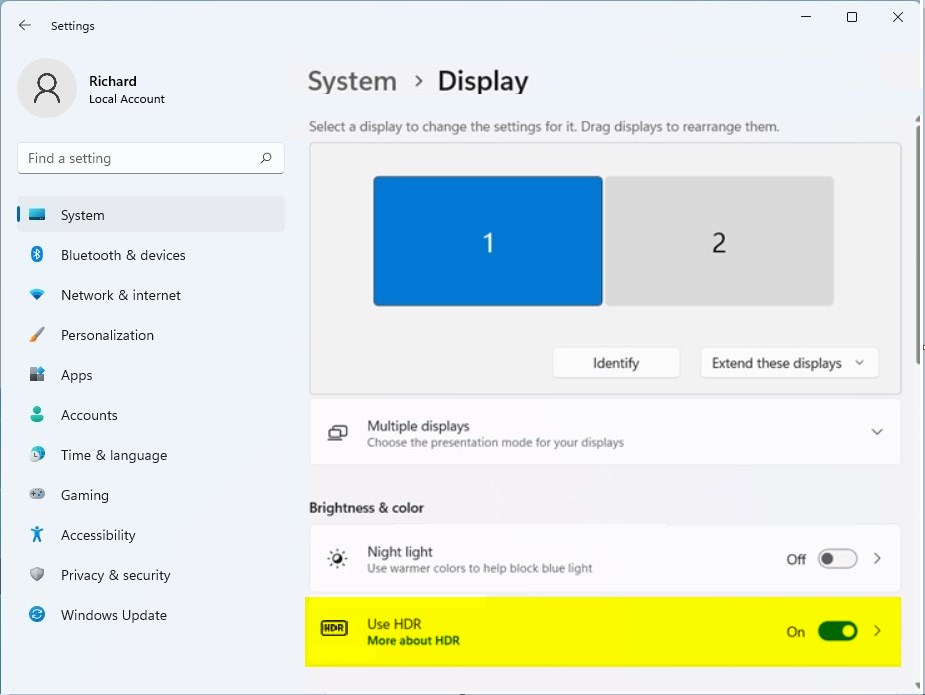This article explains how to check display Capabilities for high dynamic range (HDR) in Windows 11.
HDR content on Windows offers better Brightness and color capabilities than traditional content (sometimes called standard dynamic range [SDR] content).
Traditional content typically shows details in a bright or darker part of a scene , but not in both parts simultaneously. HDR can show a broader range of colors, light , and details between extremes.
Unlike SDR, HDR shows details, so bright parts of a scene are brighter, while dark parts can be darker, so you can see all the details.
To play HDR video in Windows 11, your display, PC, and graphics card must meet specific requirements. Here are the requirements:
Your display can be a built-in display, like a laptop, tablet, 2-in-1 PC, or an external display connected to your PC.
- Built-in displays. The built-in display needs to have a resolution of 1080p or more, and a recommended max brightness of 300 nits or more.
- External display. The HDR display or TV must support HDR10, DisplayPort 1.4, HDMI 2.0 or higher, USB-C, or Thunderbolt.
How to check display capabilities for HDR in Windows 11
As mentioned above, HDR content on Windows offers better Brightness and color capabilities than traditional content (sometimes called standard dynamic range [SDR] content).
It also shows details, so bright parts of a scene are brighter, while dark parts can be darker, so you can see all the details.
Below is how to check if your display supports HDR in Windows 11
Windows 11 has a centralized location for the majority of its settings. Everything can be done, from system configurations to creating new users and updating Windows from its System Settings pane.
To get to System Settings, you can use the Windows key + I shortcut or click on Start ==> Settings, as shown in the image below:

Alternatively, you can use the search box on the taskbar and search for Settings. Then select to open it.
In Windows Settings, click the Display tile on the right pane, as highlighted in the image below.

On the System,> Display settings pane, under Brightness & color, select the HDR or Use HDR tile to expand.

On the System > Display > HDR settings pane, choose or select the display you want to check for HDR support.
Under Display capabilities, you should see HDR details for your display.
If your display supports HDR, then the lines below will show Supported.
- HDR video streaming: Supported
- Use HDR: Supported
If not supported, the lines will show Not supported.

That should do it!
Conclusion:
- Checking display capabilities for HDR in Windows 11 is essential to ensure your display, PC, and graphics card meet the specific requirements for playing HDR video content.
- By following the provided steps, you can easily determine if your display supports HDR and enjoy the enhanced brightness, color capabilities, and details that HDR content offers.
- You will see “Supported” under HDR video streaming. Use HDR in the display capabilities section if your display supports HDR. Otherwise, it will display “Not supported”.

Leave a Reply